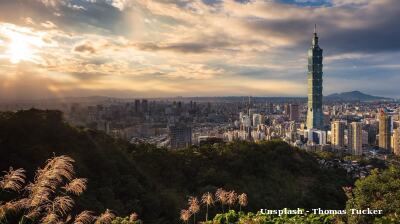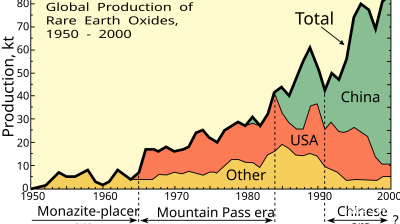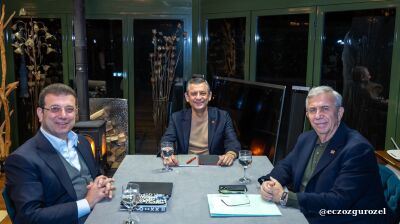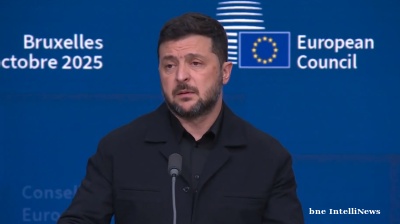A growing number of solo designers and small creative companies are producing sustainable fashion lines in Central and Eastern Europe, embracing new technologies that have made it possible to reduce the industry’s environmental footprint. At the same time they are looking back beyond the hectic pace of today’s fast fashion and the giant state factories of the communist era, to the region’s old, half forgotten traditions.
Among these innovative new designers is Floriana Sandu of Gnana Studio in Bucharest. Her atelier is carved out of a small corner of the huge Industria Bumbacului (Cotton Industry) factory site, and jealously guarded by her two cats. One of them, a huge tom, sniffs visitors suspiciously before bounding up a ladder to stare down from the platform where Sandu stores rolls of deadstock, an industry term for unused fabrics from major fashion houses.
“Everything starts with the fabric,” Sandu tells bne IntelliNews in an interview in her studio. She uses a mixture of reclaimed and recycled fabrics — her summer collection includes clothes made from vintage fabrics such as a length of wool she found at a hippie market in Amsterdam — and new fabrics sourced from ethical suppliers like Panza Topita, a local family business that produces organic and natural fabrics using only ecological water-based pigments.
Sandu’s main source of inspiration is her childhood. “I grew up in a very creative environment,” she says. One of her grandmothers produced embroidery that adorns traditional Romanian dress, and at university Sandu delved deeper into the topic, studying the Romanian village of the middle ages. “I understood the importance of a garment for these people, and the way they were made in accordance with their lifestyles and the cycles of nature,” she says. “I really want to keep this philosophy alive.”
Aside from in the deeply traditional Maramures region on Romania’s border with Ukraine, these traditions have been largely abandoned. But embroidery features on many of Sandu’s designs, and craftsmanship is highly important to her. She says her style is primarily based on a timeless silhouette and quality. Versatility is important too: “You can wear every garment with high heels or sneakers.”
The many faces of sustainable fashion
The growing sub-sector of sustainable fashion comes in many forms. Eco-fashion focusses on minimising the impact on the environment — a growing concern given the huge resource use and pollution associated with the mass market fast fashion industry — for example through using deadstock, recycled fabrics or innovating with new forms of fabric, such as those made from industrial waste, hemp or even milk. Ethical fashion is more focussed on conditions for workers and ensuring they receive a living wage. Slow fashion adherents call for people to buy better-quality garments that will last for longer and make better use of what they already own. All these come together under the umbrella of sustainable fashion.
A lot of the new wave of sustainable fashion firms combine several of these aspects. Like Gnana Studio, The 05 Studio in neighbouring Bulgaria seeks to provide good conditions for its workers as well as minimising the environmental impact of its production. Its founders, Teodora Vukodinova and Sianna Marinova, chose to focus on lingerie and swimwear “because we feel like in this particular sphere there are more possibilities for experimenting and development,” they said in an email interview with bne IntelliNews.
“Now, more than ever, the fashion sector is producing huge amounts of waste, including materials, energy, water … So much textile is simply sitting around in huge warehouses and we saw the opportunity to help with this problem by using as much deadstock as we can. We are still quite a small brand so our production isn’t big, which makes it possible to source this type of materials.”
But being a big concern isn’t necessarily an obstacle to using ethical fabrics. One of the highest profile eco-fashion brands from the region is St Petersburg based Only Me, a retailer of eco faux fur that has developed a fur lining technology that makes its faux fur garments “exceptionally warm and wind-resistant”, important in the Russian market where temperatures can plunge tens of degrees below freezing in winter.
The company works with model and actress Pamela Anderson, who has her own collection of faux furs. Anderson ensured the brand made headlines when she sent a specially designed Only Me coat to US first lady Melania Trump in 2017 to thank her for not wearing fur at her husband’s presidential inauguration.
Another brand from the region that has become internationally recognised is Ksenia Schnaider, founded by fashion designer Ksenia Marchenko from Kyiv and her husband, graphic designer Anton Schnaider. They use reworked denim, taking apart old jeans and other denim garments and transforming them into new designs. (Denim is one of the most polluting segments of the fashion industry.) While they aren’t the only brand from the region working with reclaimed fabrics, they are one of the few to have gained international recognition: fans include supermodel Bella Hadid, and the brand is stocked at London’s Selfridges.
Low cost destination
The other side of the sustainable fashion coin, ethical fashion, is often a reaction against the notoriously poor conditions in the international fashion industry. Exploitation and dangerous conditions for workers aren’t limited to the third world. Sweatshops have been exposed in West European countries like Italy and the UK, and the Clean Clothes Campaign has repeatedly reported on violations in Central, Southeast and Eastern Europe and Turkey. A 2017 report from the watchdog, for example, details “endemic poverty wages” and dangerous working conditions in Hungary, Serbia and Ukraine, countries that “offer cheap, yet experienced and qualified workers.”
“For the global fashion brands, the countries in East and Southeast Europe are a low wage paradise. Many brands even tout the fact they are “Made in Europe”, suggesting this means 'fair' conditions. In reality, many of the 1.7mn garment workers in the region live in poverty, face perilous work conditions, including forced overtime, and have accumulated significant debts,” says the report, "Europe's Sweatshops".
It’s a similar story in Romania, which, says Alina Rachieru Ilie of the family-owned shirt company Pineberry, “was known since the communist years to be an important hub in textile production, with many factories that are working in lohn [where labour-intensive operations with lower added value are located in low wage countries], delivering high quality products and being cheap among other European countries.”
This led to the location of garment production — along with other industries such as auto components — in Romania and other Central, Eastern and Southeast European countries, though as wages rise in the region among growing labour shortages, brands in search of low costs are likely to look further east. “There were situations where the workers had terrible working conditions, were paid very low wages after two to three months, worked after hours weekly and were not paid extra. All this happened also because the workers are not aware of their rights,” says Rachieru Ilie.
The situation led Rachieru Ilie to join Fashion Revolution, a global non-profit campaigning for systemic reform of the fashion industry, where she is the local representative for Romania. “I was very much interested in offering my 110 employees (90% of them women) good working conditions and a fair wage, but also trying to offer a good quality product for a fair price. So when I heard and read about the Fashion Revolution movement, I said to myself this is what we also need in Romania,” she says.
“I think we have to develop and sustain more the local brands and local manufacturing, in order to offer to clients an alternative to international mass-market brands.”
At GnanaStudio, as well as the importance of ethically sourced fabric and minimising waste, Sandu also stresses the importance of treating the people who work for her well. “I want to grow [the business] in the best way, the least invasive way for the environment, respecting the earth and everything we receive from it. I have huge respect for the people I’m working with. You need to be true to yourself and your values.”
The 05 Studio also works closely with local ateliers where Vukodinova and Marinova can monitor every aspect of production and ensure workers are treated well. “Working with local ateliers is a mutually beneficial process because we can observe how our items are made on a daily basis … we prefer to support the local economy rather than producing in countries where the conditions for the employees, as we all know, are frankly terrible. We’d like to think that our products have a good energy which translates into a good relationship with the people that manufacture them as well as with everyone we are working with creatively.”
Raising awareness
Sustainable fashion is a newly popular concept in the west, and it’s even more of a niche area in Eastern Europe. Those in the industry talk of the lack of understanding of the concept and reluctance to spend more on clothes that don’t bear the name of a famous brand.
However, awareness is growing. The Rana Plaza tragedy, where a garment factory in the Bangladeshi capital Dhaka collapsed, killing 1,135 people, was a watershed for the industry and sparked campaigns for better working conditions — even though it hasn’t dented people’s appetite for cheap, fashionable clothes. Garment production passed the 100bn mark in 2014, and fast fashion retailers are increasingly expanding into Eastern Europe and other developing markets as returns start to slow in developed markets.
Local campaigners are also raising awareness, among them Romanian journalist Laura Stefanut of Casa Jurnalistului who went undercover to make her documentary Made in Europe, revealing the conditions in some Romanian factories.
Meanwhile in Russia, environmental issues have been forcibly brought to the attention of thousands of people who live near the landfills in the outskirts of major cities. A serious health hazard that often break into flames, spewing toxic smoke into the atmosphere, landfills became the centre of a protest movement in 2018 that rattled the government sufficiently for it to take action on waste management. A side effect of the landfill protests was that they “pushed the discussion on sustainable consumption right now in the media,” says Olga Gurova, senior fellow at the University of Helsinki and author of Fashion and the Consumer Revolution in Contemporary Russia, and part of that is growing awareness of sustainable fashion.
“Russia is still far behind compared to Western Europe, but there is a discussion right now and some fashion brands started to position themselves as conscious and ethical,” she adds.
Not everyone has got there yet. GnanaStudio’s Sandu came up against the problem of people simply not understanding the sustainable fashion concept. When she explained that she didn’t keep stock and her clothes would take two to three weeks to be made to order, “they were like, OMG but I want it tomorrow,” she says. “I’m sorry, but I don’t think you understand the concept.”
Through her online platform, she sells to customers in Germany, Switzerland and other companies, acknowledging that “to be honest, Romania is not my market.” While she has tried to educate people, “it’s a huge investment of time and energy, and people are not very open to the idea.”
That’s not to say there isn’t a market in East European countries, but it’s a small one. “Our brand serves a nice market and it is normal that the products we offer appeal to a certain type of people that make conscious choices when purchasing goods,” say the founders of The 05 Studio. “[O]ur clients are interested in smaller brands, independent designers, vegan leather products with special attention behind them. We often see that someone that chooses 05 Studio also buys from other independent brands that we follow, which creates a special bond and community among artists and brands with similar ideas and beliefs.”
“People, especially the young ones, are becoming more responsible to the environment and to national cultural heritage,” says Rachieru Ilie. She talks of the very different attitudes among the younger generation of Romanian designers, and the older textile manufacturers “that refuse the new technology, refuse to change their mentality, that are still living in the past. So, they don’t embrace the idea of being ethical and sustainable. But there are also examples who wish to do things differently, who are looking to recycle fabrics, have proper working conditions for their employees.”
She concludes: “The actions are made with little steps, but the most important thing is that steps are taken.”
Features

US expands oil sanctions on Russia
US President Donald Trump imposed his first sanctions on Russia’s two largest oil companies on October 22, the state-owned Rosneft and the privately-owned Lukoil in the latest flip flop by the US president.

Draghi urges ‘pragmatic federalism’ as EU faces defeat in Ukraine and economic crises
The European Union must embrace “pragmatic federalism” to respond to mounting global and internal challenges, said former Italian prime minister Mario Draghi of Europe’s failure to face an accelerating slide into irrelevance.

US denies negotiating with China over Taiwan, as Beijing presses for reunification
Marco Rubio, the US Secretary of State, told reporters that the administration of Donald Trump is not contemplating any agreement that would compromise Taiwan’s status.

Asian economies weigh their options amid fears of over-reliance on Chinese rare-earths
Just how control over these critical minerals plays out will be a long fought battle lasting decades, and one that will increasingly define Asia’s industrial future.




